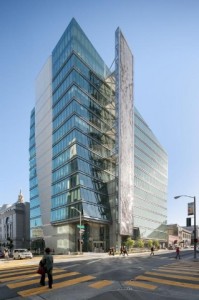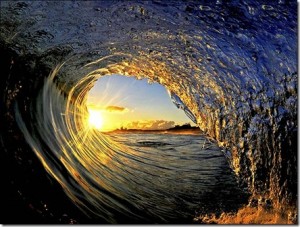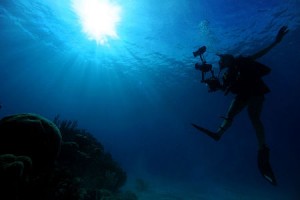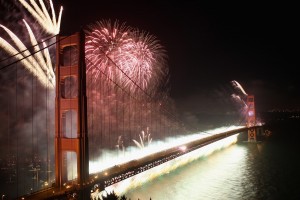 The San Francisco Public Utilities Commission’s new environmentally sustainable headquarters building at 525 Golden Gate Avenue, designed in joint venture by KMD Architects and Stevens Architects, provides a poster-child of sustainability innovation for urban office buildings, and reflects the mission of the PUC as a provider and manager of water and energy for San Francisco. All told, 525 Golden Gate in comparison to similarly-sized office buildings features 50% less of a carbon footprint, uses 32% less energy, and consumes 60% less water.The 13-level, 277,511 gross-square-foot, $190 million SFPUC headquarters building is one of the greenest urban office buildings of its kind, bringing together in a modern, contextually-designed office tower some of the most innovative new technologies at the forefront of building design.
The San Francisco Public Utilities Commission’s new environmentally sustainable headquarters building at 525 Golden Gate Avenue, designed in joint venture by KMD Architects and Stevens Architects, provides a poster-child of sustainability innovation for urban office buildings, and reflects the mission of the PUC as a provider and manager of water and energy for San Francisco. All told, 525 Golden Gate in comparison to similarly-sized office buildings features 50% less of a carbon footprint, uses 32% less energy, and consumes 60% less water.The 13-level, 277,511 gross-square-foot, $190 million SFPUC headquarters building is one of the greenest urban office buildings of its kind, bringing together in a modern, contextually-designed office tower some of the most innovative new technologies at the forefront of building design.
“What better organization than a major municipal power and water agency to create one of the most advanced buildings in green design in the U.S.,” said David Hobstetter, Principal of KMD.“Our intent from the beginning was to create the most energy-efficient office building developed in an urban setting in the United States to date,” said Ryan Stevens, KMD’s Director of Design. “Many of these features are uncommon in buildings today, but will be commonplace in years to come.”
A wind turbine tower on the north facade, solar panels on sunny exteriors, sun-shading and other techniques combine to make the building one of the most power-efficient anywhere, using 32% less energy than similarly-sized office buildings. The integrated, hybrid solar array and wind turbine installation can generate up to 227,000 kilowatt hours per year or 7% of the building’s energy needs. A state-of-the-art raised flooring system incorporates the building’s data and ventilation infrastructure and reduces heating, cooling and ventilation energy costs by 51%. Daylight harvesting that bounces sunlight at appropriate amounts into workspaces saves electricity and minimizes artificial lighting, and enhances worker productivity. Other techniques include automatic shut-off sensors after hours for lighting and work station equipment.
Alternative Energy For Puerto Rico ?



 Sustainable Development
Sustainable Development


